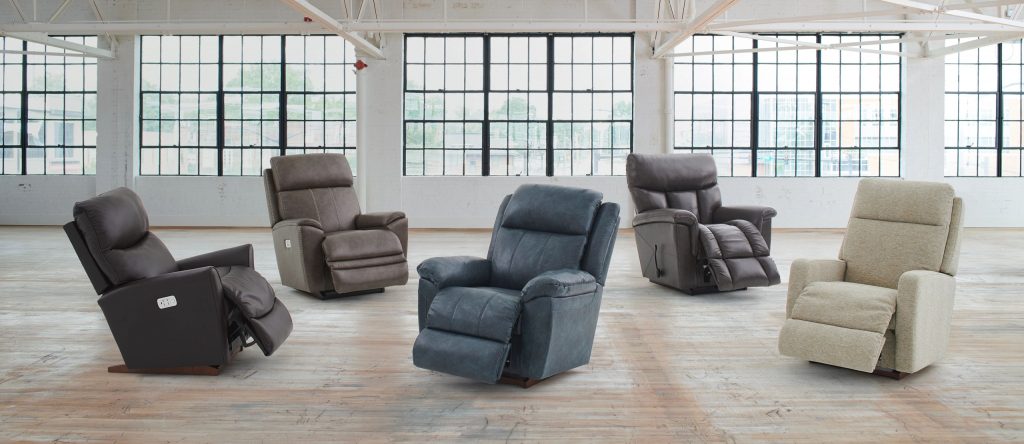Regular maintenance is crucial to ensure the longevity and smooth functioning of your recliner chair. Whether it’s a manual or electric recliner, giving it proper care can prevent common issues from arising and save you the hassle and expenses of professional repairs. Taking the time to tighten loose screws, clean upholstery, and address any signs of wear and tear can significantly prolong the lifespan of your recliner. In this comprehensive guide, we will explore common problems and their solutions, ensuring that your recliner remains a reliable and comfortable piece of furniture for an extended period of time. So, let’s dive into the world of recliner maintenance and discover simple solutions to keep your beloved chair in top condition.
Regular Maintenance
Regular maintenance is crucial to ensuring the longevity and optimal performance of your recliner. Like any piece of furniture, recliners are subject to wear and tear over time. By investing a small amount of time into regular upkeep, you can prevent common issues and potentially costly repairs down the line.
Checking Electrical Components
When it comes to an electric recliner, the functionality lies in its electrical components. Regularly checking these components is crucial for maintaining the smooth operation of your recliner chair. Here’s a step-by-step guide to help you troubleshoot any potential wiring issues.
1. Visual Inspection: Begin by carefully examining the power cord and surrounding electrical connections for any signs of wear or loose cables. Look for frayed or damaged wires, as they can lead to faulty wiring.
2. Testing the Power Supply: Use a multimeter to check the power supply to the recliner. Ensure that the outlet is supplying the correct voltage to the chair. Additionally, test the power cord for any loose wires or damaged connections.
3. Inspect the Control Panel: Examine the control panel for any loose connections or visible signs of damage. Ensure that all buttons are functioning properly and respond to commands from the remote control.
4. Seek Professional Help if Necessary: If you are unsure about handling electrical components or if you notice any significant issues during the inspection, it is best to contact a professional service technician who specializes in furniture repair.
Periodic Cleaning and Examining for Signs of Wear
Periodic cleaning and examining for signs of wear are essential for maintaining the longevity and functionality of your recliner. Regular maintenance not only helps to keep your recliner looking clean and fresh but also allows you to identify any potential issues before they become significant problems.
Cleaning your recliner on a regular basis is especially important in households with pets and children. Pets can leave behind stains and odors, while children may accidentally spill food or beverages on the upholstery. By cleaning these stains promptly, you can prevent them from becoming ingrained into the fabric and causing permanent damage.
Start by vacuuming your recliner to remove any loose dirt or debris. Then, depending on the material of your upholstery, follow the manufacturer’s instructions for cleaning. Most fabric recliners can be spot cleaned with a mild detergent and water, while leather recliners may require specific leather cleaning products.
In addition to cleaning the upholstery, it’s crucial to examine the recliner for signs of wear. Check the seams and stitching for any loose threads or tears. Inspect the recliner mechanisms and springs for any misalignment or signs of damage.
Updating Worn-Out Parts
Updating worn-out parts in your recliner is a simple and effective solution to extend the lifespan of your favorite piece of furniture. The first step in this process is to identify the specific parts that need replacement. Common areas that tend to wear out over time include the seat cushions, armrest padding, and even the footrest.
Once you have identified the worn-out parts, the next step is to source the replacement parts. You can start by contacting the manufacturer of your recliner to see if they offer replacement parts. If not, there are also online retailers that specialize in recliner replacement parts, offering a wide range of options to choose from.
When you have obtained the necessary replacement parts, it’s time to remove the old worn-out parts and install the new ones. Follow the manufacturer’s instructions or consult online resources for step-by-step guidance on this process. Ensure that the new parts are securely fastened and provide a comfortable fit for optimal use.
Power Recliners
Power recliners have become increasingly popular in recent years due to their advanced features and customization options. These modern pieces of furniture offer an elevated level of comfort and convenience with their ability to adjust the position of the seat and footrest at the touch of a button. However, like any other piece of furniture, power recliners may encounter issues over time.
Troubleshooting Remote Control Issues
Remote control issues can be a common problem for power recliners, but they are usually easy to fix with a few simple steps. If you’re facing difficulty using the control panel or syncing the wireless remote, here’s what you can do:
1. Check the battery: Start by ensuring that the battery in the remote control is not dead. Replace it with a fresh one if necessary.
2. Ensure proper connection: Make sure that the power recliner is properly connected to an electrical outlet. Check the power cord and any extension cords for any loose connections or damage.
3. Follow the recliner repair guide on ReclinerAdvice: Sometimes, the wireless remote needs to be synced with the power recliner. Refer to the manufacturer’s instructions to properly pair them. This typically involves pressing specific buttons on both the remote and the control panel in a certain sequence.
By following these troubleshooting steps, you can often resolve remote control issues in power recliners without the need for professional repair. However, if the problem persists, it may be worth contacting a service technician for further assistance.
Maintaining Upright Position Mechanisms and Springs
Maintaining the upright position mechanisms and springs in your recliner is essential for its longevity and optimal performance. Here are some simple steps to keep them in good shape:
1. Identify the mechanism: Different recliners have various types of upright position mechanisms, such as levers or buttons. First, identify the specific mechanism in your recliner and ensure it is functioning properly. If there are any issues, consult the manufacturer’s instructions or contact a professional for assistance.
2. Inspect the springs: Regularly inspect the springs in your recliner for any signs of wear or damage. Look for sagging or broken springs, as they can affect the overall comfort and support of the chair. If you notice any issues, consider contacting a furniture repair specialist who can replace or repair the springs.
3. Lubricate the springs: Over time, the springs in your recliner may require lubrication to maintain their smooth operation. Use a silicone-based lubricant specifically designed for furniture mechanisms. Apply the lubricant to the springs according to the manufacturer’s instructions to ensure proper functioning.
By following these simple maintenance steps, you can ensure that the upright position mechanisms and springs in your recliner remain in good condition for an extended period of time. Regular inspections and lubrication will help prevent any potential issues and keep your recliner working effectively.
Inspecting Internal Components for Misalignment or Damage
Inspecting the internal components of a recliner for misalignment or damage is crucial for ensuring its proper functionality and longevity. To begin, carefully remove the upholstery from the recliner, following the manufacturer’s instructions if necessary. This will allow you to access the internal mechanisms.
Once the internal components are exposed, visually inspect them for any signs of misalignment or damage. Check for loose or misaligned parts such as screws, nuts, or bolts, and tighten or realign them appropriately. Pay close attention to the recliner frame, recliner mechanisms, and any electrical components if applicable.
Next, examine the internal mechanisms for any signs of wear or breakage. Look for worn-out parts or any visible damage that may be affecting the recliner’s performance. If you notice any issues, consider contacting a professional service technician or furniture repair specialist for further evaluation and repairs.
Regularly inspecting the internal components of your recliner for misalignment or damage is an effective solution to prevent further problems and extend the lifespan of your piece of furniture. By addressing any loose or misaligned parts and identifying signs of wear, you can maintain the proper functioning of your recliner and avoid costly repairs in the future.

Furniture Repair Tips and Tricks
When it comes to furniture repair, knowing some tips and tricks can save you time and money. Whether it’s fixing a recliner or addressing other common issues, having the right knowledge and tools can help you effectively restore your furniture to its former glory.
Replacing Loose Screws or Other Mechanical Issues
If your recliner chair is experiencing instability or difficulty in reclining, it’s important to identify and address any loose screws or other mechanical issues that may be the cause. These issues can greatly affect the overall performance of your recliner. Here’s a step-by-step guide on how to replace loose screws and fix other mechanical problems:
1. Begin by inspecting the recliner frame and mechanisms for any signs of loose screws or misaligned components.
2. Use a screwdriver or Allen wrench to tighten any loose screws that you find. Make sure to tighten them firmly but be careful not to overtighten and strip the threads.
3. If a screw is stripped or missing, replace it with a new one of the same size and type.
4. Check for any misaligned components such as springs, levers, or bolts. Adjust or realign them as needed.
5. Lubricate any moving parts with a silicone-based lubricant to ensure smooth operation.
6. Test the recliner to ensure that all mechanical issues have been resolved and that it is functioning properly.
Identifying Motor and Wiring Problems with Electric Recliners
Electric recliners add convenience and comfort to our lives, but just like any other electrical device, they can experience motor and wiring problems. Identifying these issues is crucial to get your recliner back up and running smoothly.
One common issue is a loose or disconnected power cord. Make sure the power cord is securely plugged into an electrical outlet and connected to the recliner’s control panel. If the power cord is damaged, it may need to be replaced.
Another culprit could be a faulty remote or control panel. Check if the batteries in the remote are still functioning and replace them if necessary. If the control panel is not responding, it may need to be repaired or replaced.
Burned-out motors can also cause the recliner to stop working. If you hear a buzzing sound or notice that the recliner is not responding to the remote or control panel, the motor may be the issue. In such cases, it’s best to contact a professional repair technician.
Wiring issues can be another cause of motor problems. Look for any loose wires or visible damage to the wiring. If you’re not comfortable handling electrical repairs yourself, it’s advisable to seek the help of a professional.
Conclusion
In conclusion, regular maintenance is crucial for keeping your recliner in optimal condition. By checking and maintaining the electrical components, such as the power cord, remote, and control panel, you can troubleshoot and resolve common issues like loose connections or faulty wiring. Additionally, periodic cleaning of the upholstery not only keeps it looking fresh but also prevents the buildup of dirt and debris that can affect the recliner’s mechanisms. It is also important to examine the recliner for any signs of wear, such as worn-out parts or misaligned components, which can be addressed through proper maintenance and timely repairs. For a comprehensive recliner repair guide and expert advice, be sure to visit ReclinerAdvice. With regular maintenance and attention to detail, you can extend the life of your recliner and enjoy its comfort for years to come.

